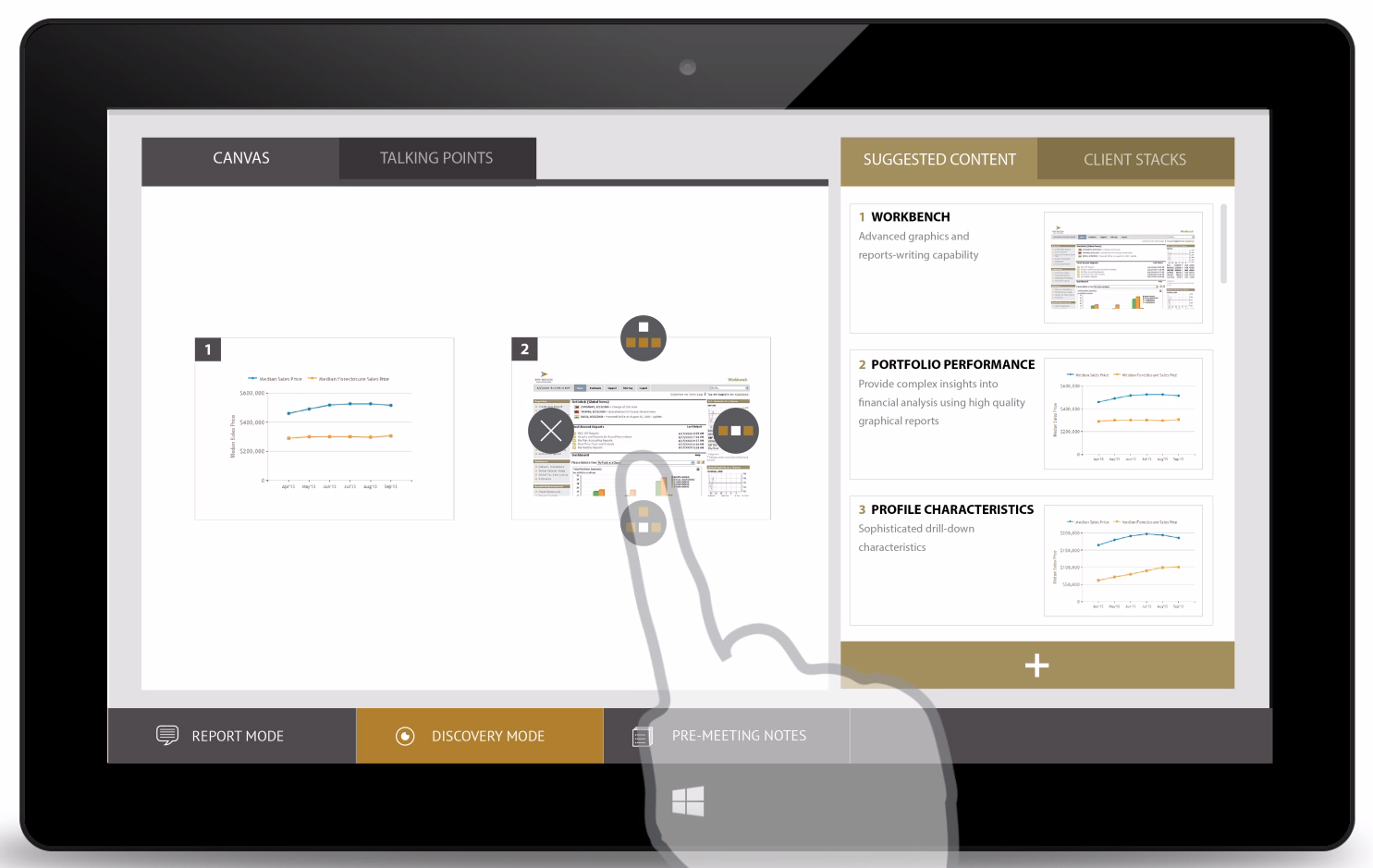
A meeting space designed around information sharing to increase trust between business partners
 I led a design team to envision the near future of data visualization for BNY Mellon. more
I led a design team to envision the near future of data visualization for BNY Mellon. more User research revealed a bottleneck - the ability of sales representatives to successfully deliver data to the client during meetings. more
User research revealed a bottleneck - the ability of sales representatives to successfully deliver data to the client during meetings. more We set out to create a new meeting experience that instills clients with confidence and trust. more
We set out to create a new meeting experience that instills clients with confidence and trust. more We designed Presentable to help sales representatives run smooth presentations, and show clients clearer insight into their assets. more
We designed Presentable to help sales representatives run smooth presentations, and show clients clearer insight into their assets. more

Context
BNY Mellon is the largest custodian bank in the world, with $30 trillion USD in assets. The complex financial instruments used by the bank produce large amounts of data. Wealthy clients – corporations and other banks – expect complete transparency into the state of their investments, and crave tools that let them drill down into this information and review the smallest details. BNY Mellon asked my team to envision how they might display financial analytics data 3-5 years in the future.
My roles
- Leadership – I managed a team of two undergraduate design students, leading discussions and brainstorming sessions, and assigning responsibilities.
- User research & consolidation – I performed domain research and interviewed potential users. Based on the data I gathered, I developed personas and identified pain points and opportunities.
- Design execution & validation – I designed the final product, from initial concept to wireframes, mockups, and 3D renders.
Discovery
We began by performing domain research, to understand the challenges that custodian banks face, and the value that their clients expect to gain. We performed a literature review in order to familiarize ourselves with industry concepts and standard practice, and interviewed BNY Mellon employees to understand how BNY Mellon stands out from their competitors. We investigated both areas in which BNY Mellon was exemplary, and the challenges that they faced.
We discovered three top concerns among BNY Mellon's clients. They expected their assets to be secure, liquid, and compliant with regulations. Security and risk management were among the most important aspects of BNY Mellon's brand, and liquidity allowed clients to remain in control of their investments and quickly respond to market trends. Clients typically gained information about their assets during meetings with BNY Mellon sales staff.
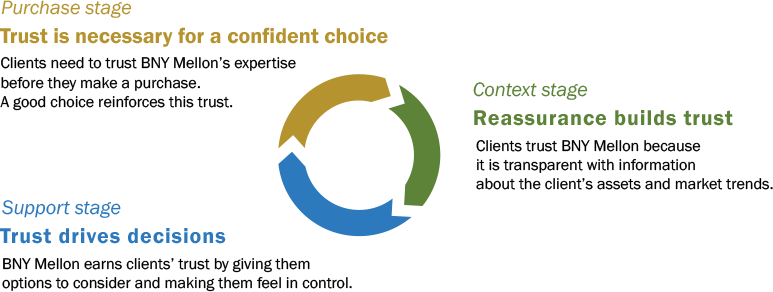
We held further interviews with BNY Mellon employees, including a participatory design exercise, in order to establish what the current meeting protocol looks like and where its pain points were. We learned that these meetings tended to be small – a key executive and 2-5 influencers who represent day-to-day users of BNY Mellon's products. The salespeople would frequently be too busy to prepare for these meetings, and in-depth questions would have to be answered by BNY Mellon business analysts days or even weeks after the meeting.
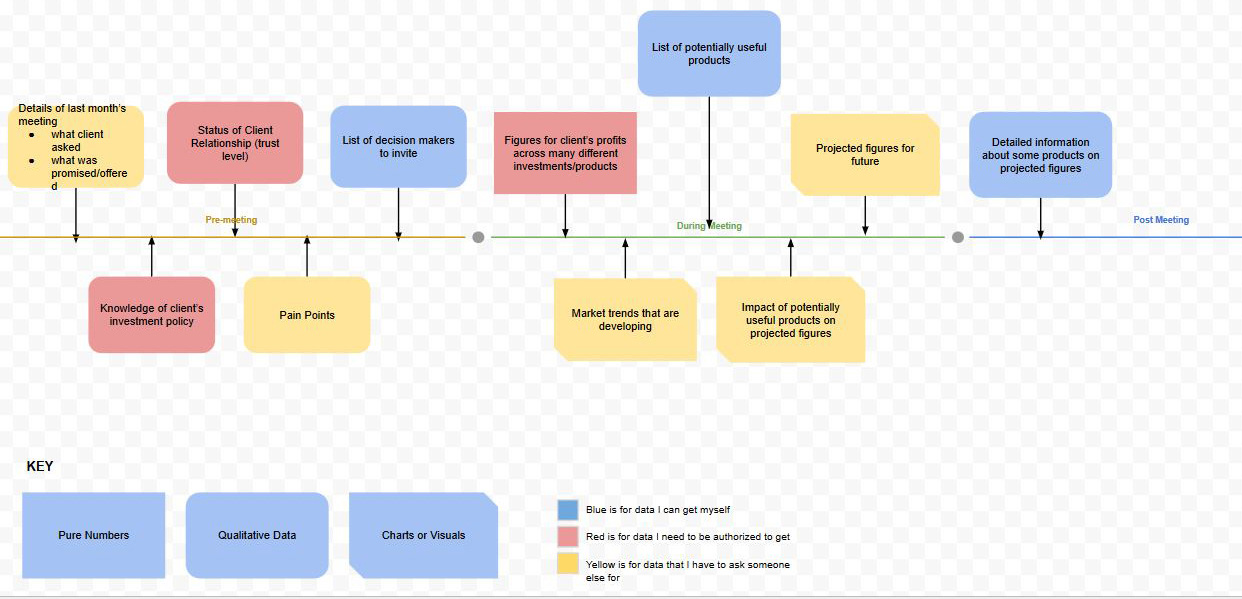
Design Process
We set out to create a solution focused around the meeting. It was clear from our research that conveying information to the customer was a major pain point, and also a great opportunity to innovate. Traditional slideshows have been used in meetings for years, a static sequence of slides could not take advantage of the vast library of expertise and data that BNY Mellon possesses. We wanted to help the salespeople answer hard or unexpected questions, giving BNY Mellon a major edge in earning client trust.
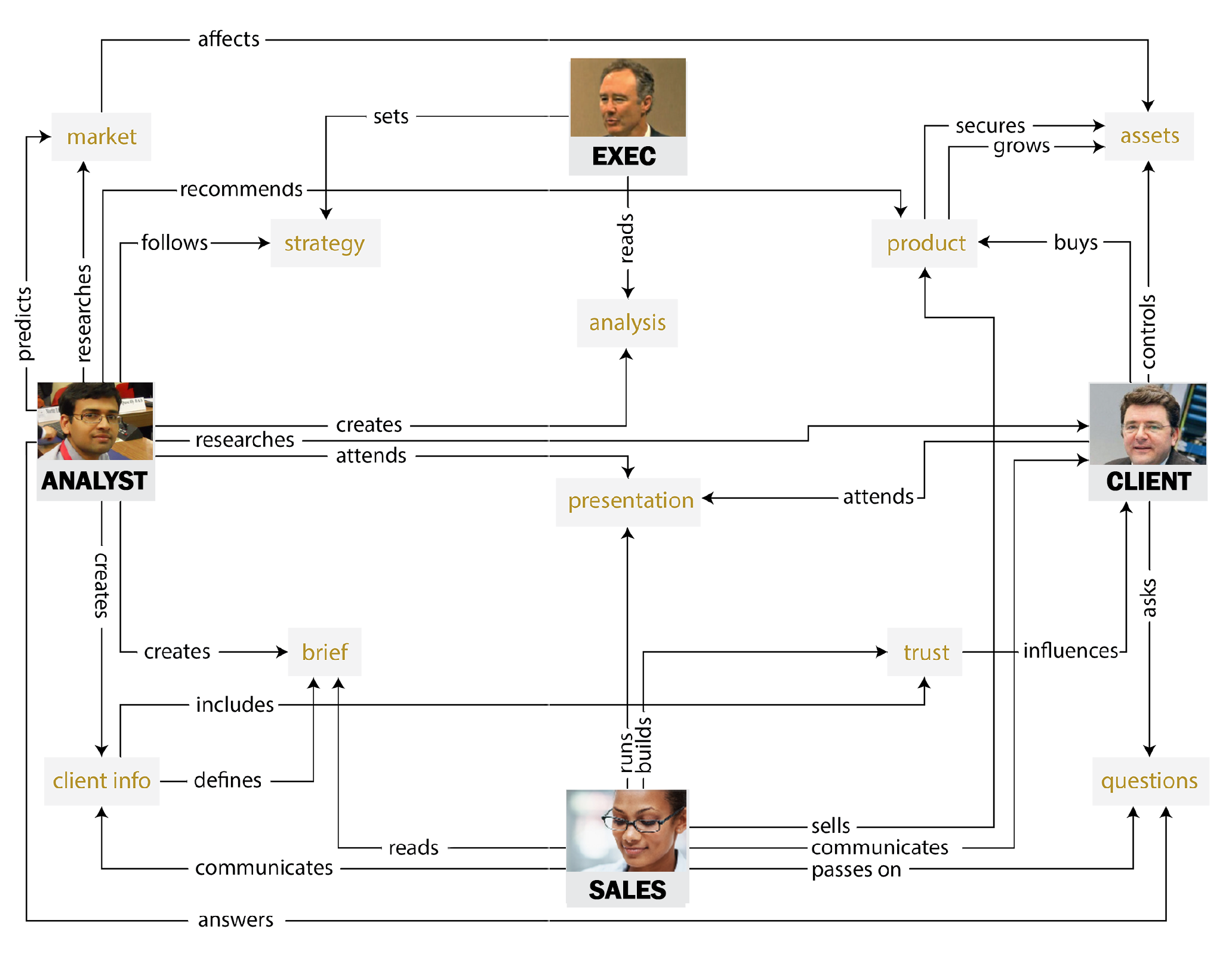
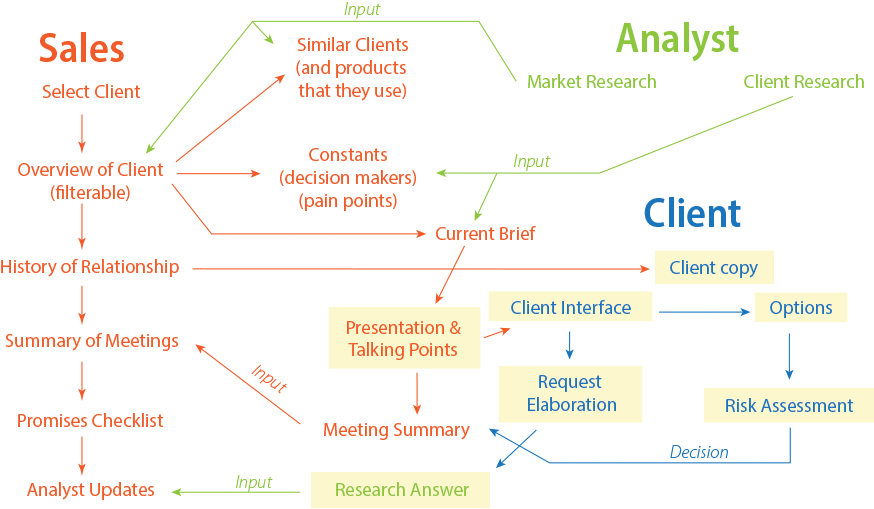
We also found that a slideshow presentation is too unilateral – the presenter stands in the front of the room, commanding a huge screen, while the audience sits and listens. This setup is effective when a lecturer addresses students, but in a meeting between partners, a more equal power dynamic creates a better environment for conversation. We wanted to break away from the linearity of a traditional slideshow, and give both presenters and clients the means to control the flow. We developed a usage scenario that involved the presenter experiencing typical pitfalls of a conventional presentation, and designed ways to escape them and succeed.
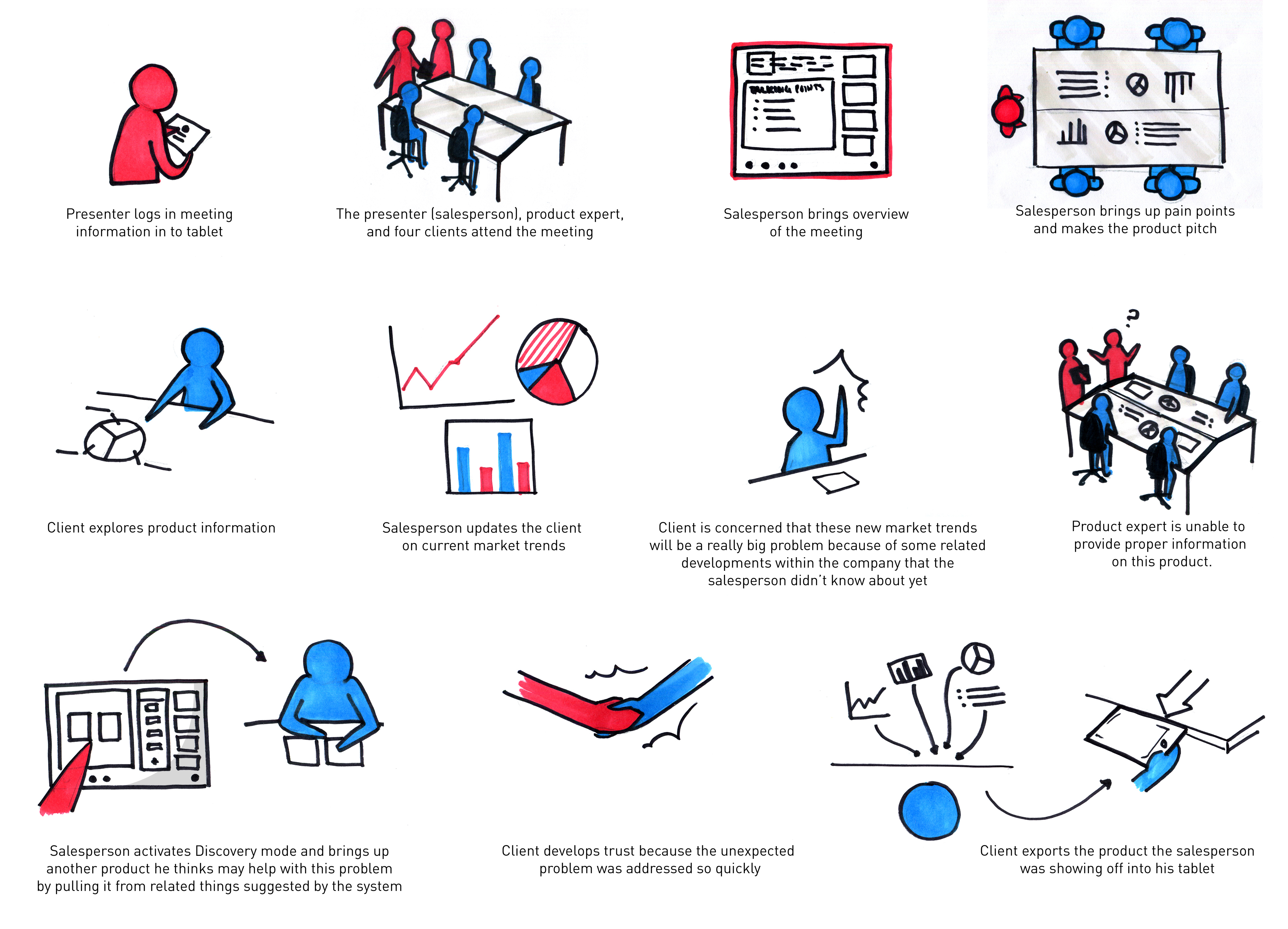
Outcomes
Our final creation was PresenTable – a new way to present information to clients in a more friendly, conversation-like environment. Information on the PresenTable is arranged on cards instead of bullet points, so it can use any visual information - a quote from an article on BNY Mellon's website, a JPEG of a chart exported from Excel, or even a live visualization generated by Touchpoint.
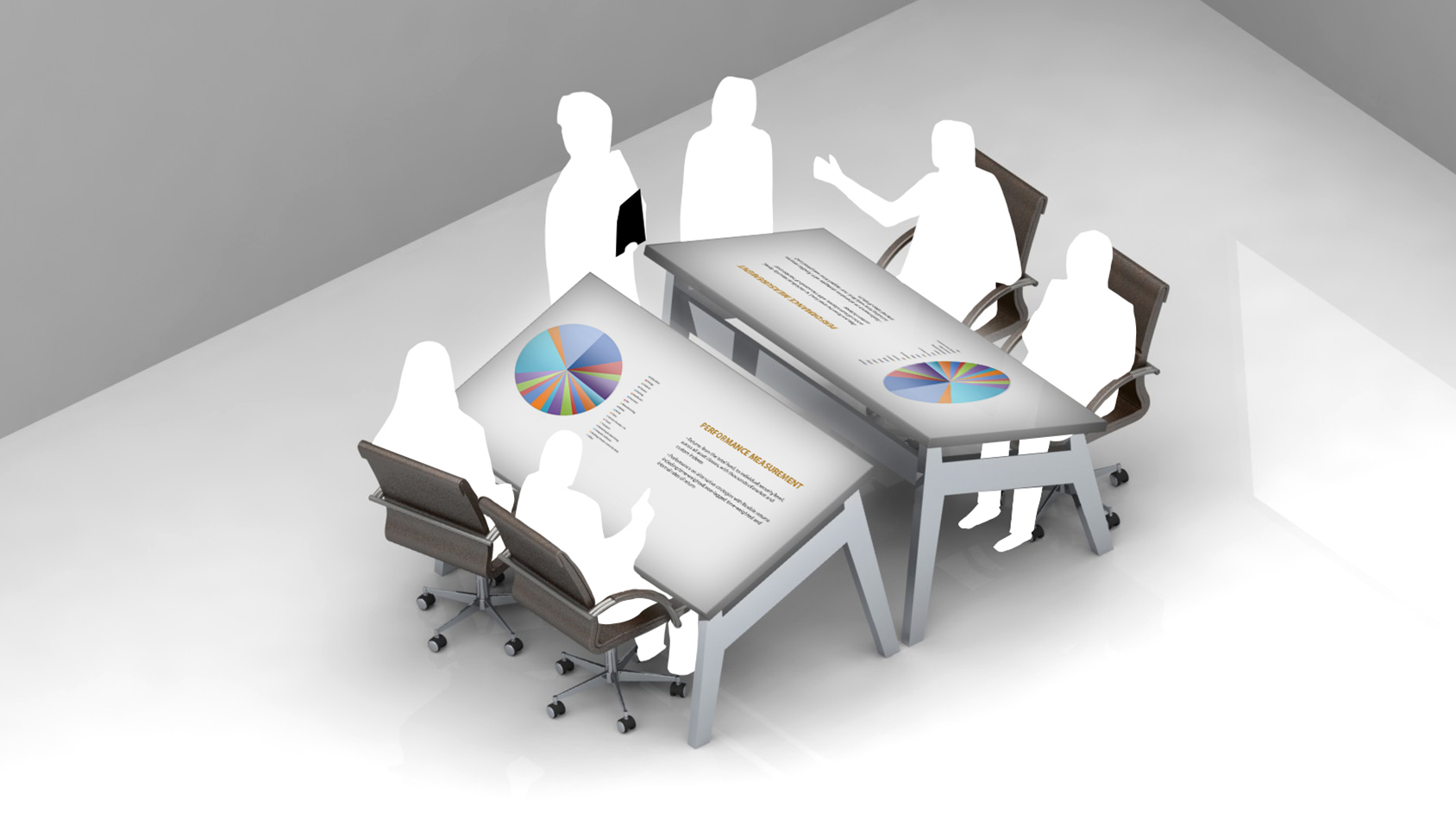
Clients can drag these cards from the presentation zone to their own personal space, and explore related information with simple gestures. If clients see something that they want to talk about, they can flag the card to let the presenter know they want to discuss it without interrupting any current train of thought.
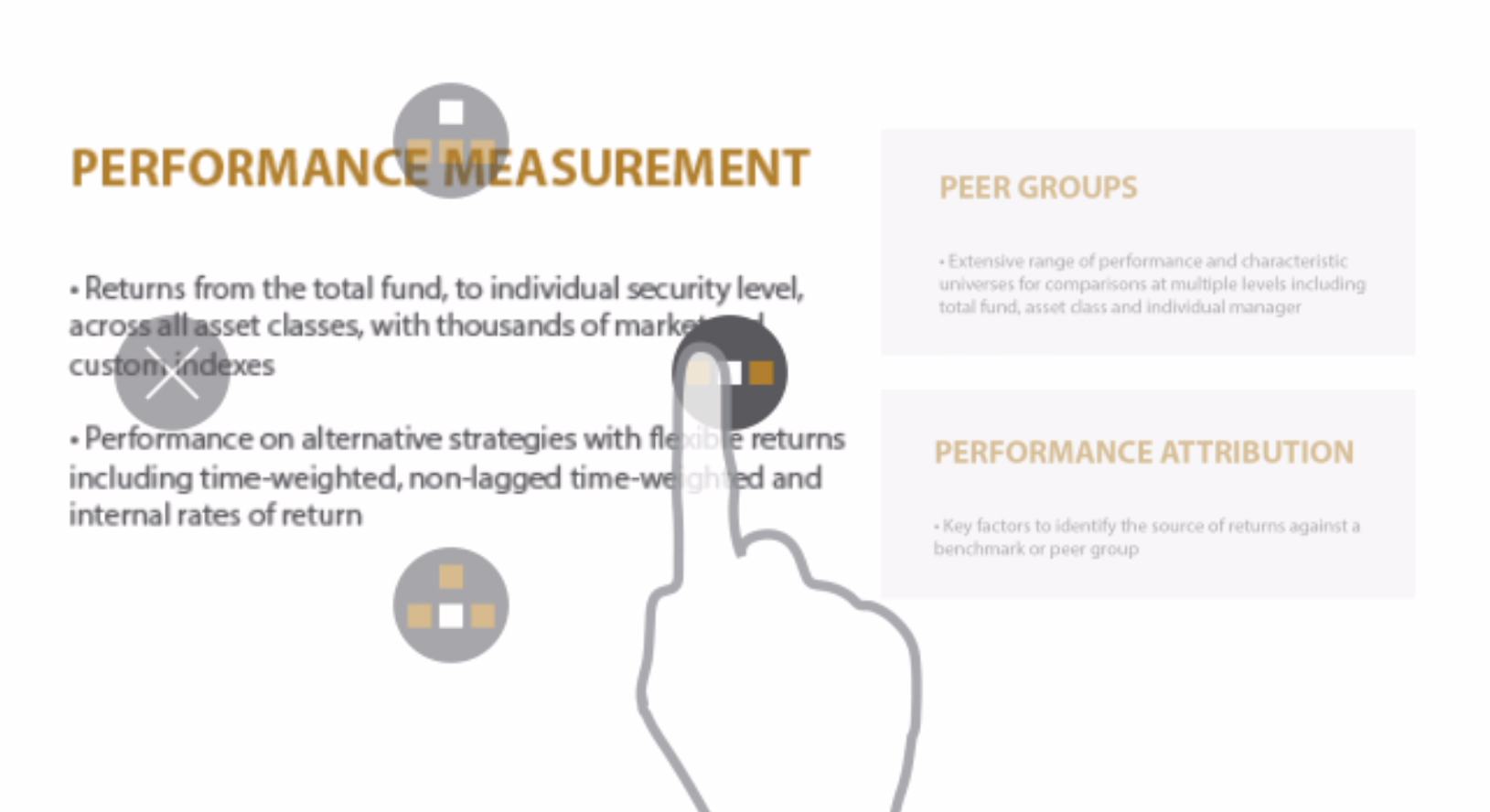
The salespeople control the flow of the presentation with a tablet-based interface. Each card has talking points associated with it. When cards are displayed on the table, their talking points appear in the tablet interface. This is very helpful for salespeople when clients catch them by surprise with a question, because the answer will often be found right here. This ability to answer difficult questions makes clients confident in BNY Mellon's knowledge and effectiveness.
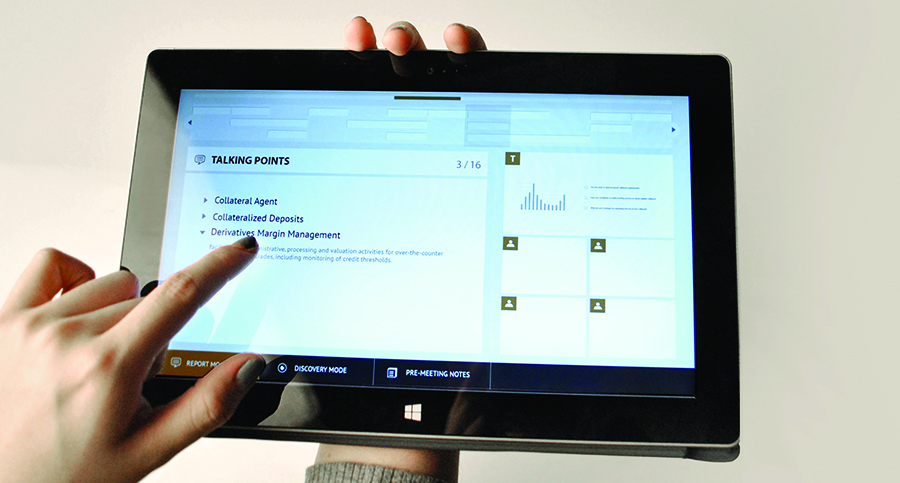
Presentable integrates with BNY Mellon's existing Touchpoint tool. Because the cards are abstract containers that only determine layout for their content, they can easily accommodate data streams from Touchpoint, and display the resulting visualizations seamlessly alongside any other content. The PresenTable system can dynamically fetch relevant content through Discovery Mode even when the presenter is caught unprepared.
